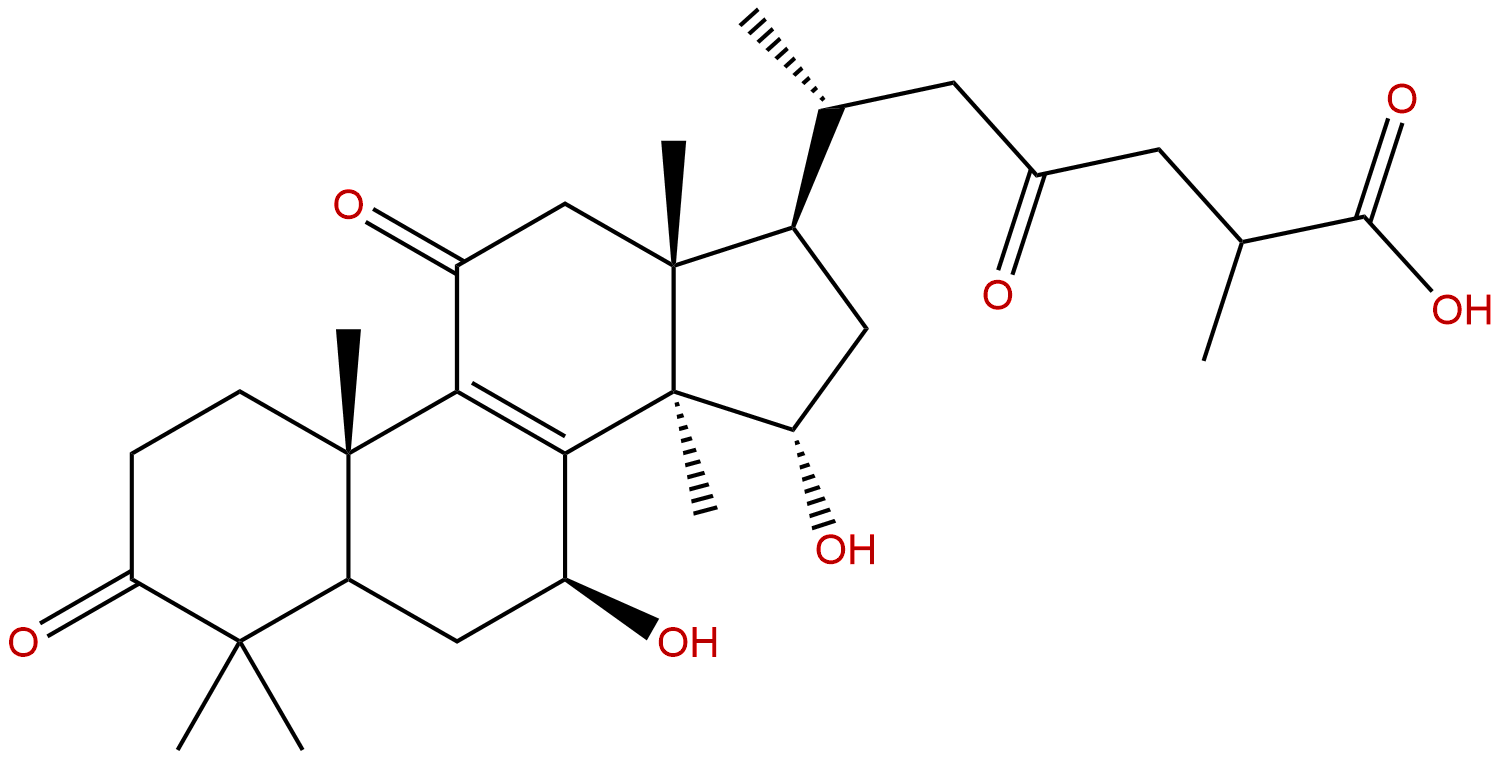
Ganoderic Acid ACAS No.:81907-62-2
|
||||||||||
 |
|
|
||||||||

| Catalogue No.: | BP0615 |
| Formula: | C30H44O7 |
| Mol Weight: | 516.675 |
Product name: Ganoderic Acid A
Synonym name:
Catalogue No.: BP0615
Cas No.: 81907-62-2
Formula: C30H44O7
Mol Weight: 516.675
Botanical Source: Ganoderma lucidum (reishi)
Physical Description: Powder
Type of Compound: Triterpenoids
Purity: 95%~99%
Analysis Method: HPLC-DAD or/and HPLC-ELSD
Identification Method: Mass, NMR
Packing: Brown vial or HDPE plastic bottle
Storage: Store in a well closed container, protected from air and light. Put into refrigerate or freeze for long term storage.
Whenever possible, you should prepare and use solutions on the same day. However, if you need to make up stock solutions in advance, we recommend that you store the solution as aliquots in tightly sealed vials at -20℃. Generally, these will be useable for up to two weeks.
The product could be supplied from milligrams to grams, up to kilograms
Inquire for bulk scale.
Descriptions:
Ganoderic acid A is a lanostane triterpene isolated from Ganoderma lucidum. It exhibits antitumor activity, which is mainly mediated through its inhibitory effect on nuclear transcription factor-kappaB and activator protein-1, it promotes cisplatin-induced cell death by enhancing the sensitivity of HepG2 cells to cisplatin mainly via the signal transducer and activator of transcription 3 suppression. [1]
Ganoderic acid A induces a remarkable cytotoxicity in various leukemia and lymphoma cell lines and primary tumors, with a minor toxicity to nonmalignant B-cells, can upregulate pro-apoptotic protein Bax proteins while downregulating anti-apototic proteins Bcl-2 and survivin, it may play dual roles in inducing apoptosis and enhancing HLA class II Ag presentation, and could be used as novel adjunctive therapy for the treatment of hematological malignancies.[2]
Ganoderic acid A can induce proliferation inhibition, apoptosis and suppression of invasion in human osteosarcoma HOS and MG-63 cells, down-regulate the expression level of phosphorylated STAT3 and increase the phosphorylation level of p38 and NF-κB1 expression in both cells. [3]
References:
[1] Yao X, Li G, Xu H, et al. Planta Medica, 2012, 78(16):1740-8.
[2] Haque A, Radwan F F Y, Hossain A, et al. Cancer Res, 2012, 72(8 Supplement):5641.
[3] Shao J, Li Z, Jiao G, et al. Journal of Southern Medical University, 2015, 35(5):619-24.
[4] Duan-Ping L U, Chen S, Wang Y, et al. Modern Chinese Medicine, 2013, 15(06):496-9.
HPLC of Ganoderic Acid A
